Order free postcards
to send to your MP!

The campaign to reduce the abortion time limit to 22 weeks
The campaign to
reduce abortion time
limit to 22 weeks
Introducing two Little Fighters
The Gestational Time Limit Reduction amendment
Seven reasons why the law needs to change
INTRODUCING TWO LITTLE FIGHTERS
Twins from Derbyshire born at
22 weeks + 5 days
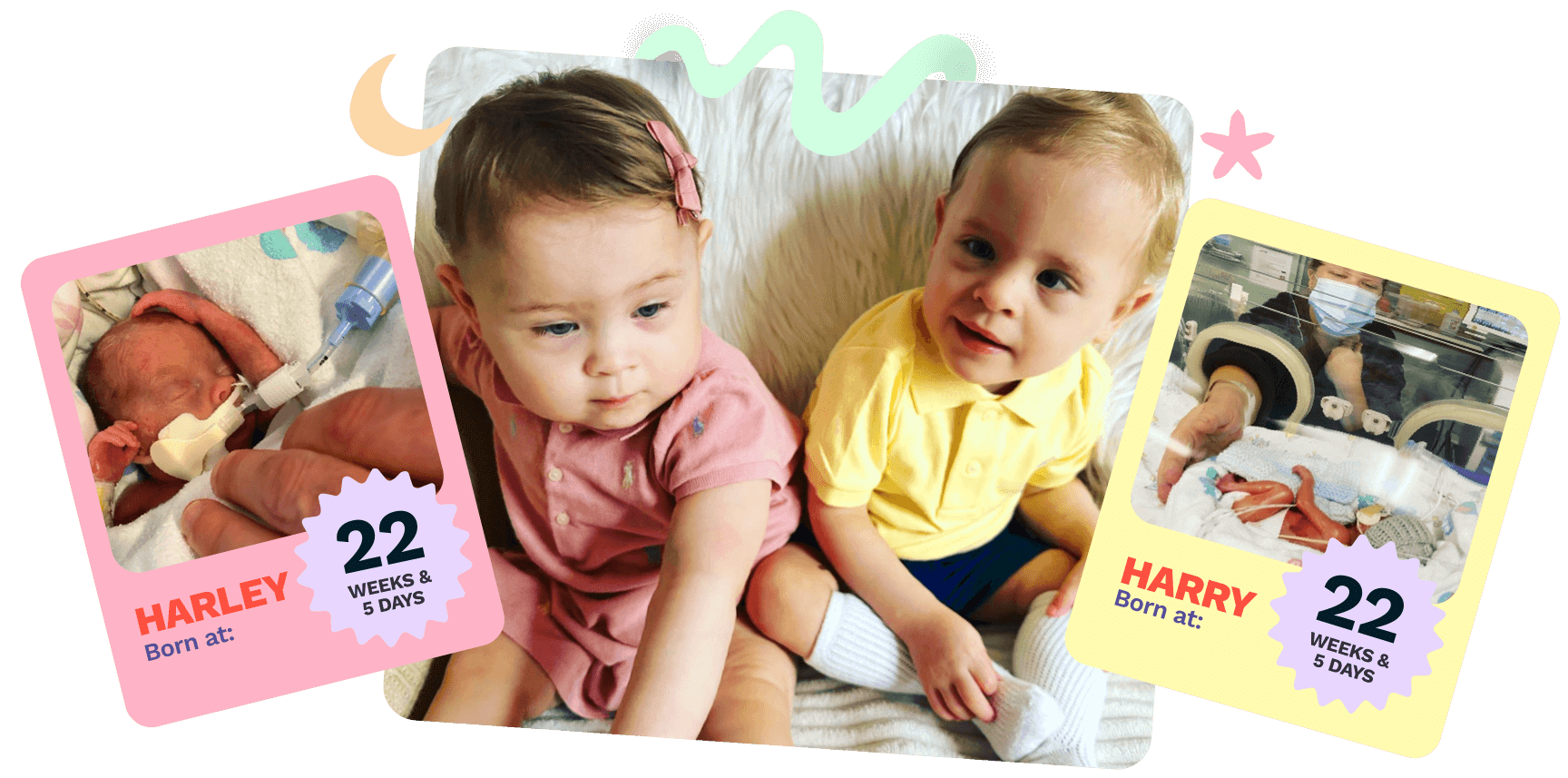
They’re now 2.5 years old and bring us so much joy each and every day.
They’re both so giggly, inquisitive and it’s so fun to see both of their different personalities develop.

The latest guidance from the British Association of Perinatal Medicine enables doctors to intervene to save premature babies like Harry and Harley from 22 weeks.
Research indicates that a significant number of babies born at 22 or 23 weeks gestation can now survive outside the womb.
This leaves a real contradiction in British law. In one room of a hospital, doctors could be working to save a baby born alive like Harry or Harley at 22 or 23 weeks whilst, in another room of that same hospital, a doctor could perform an abortion that would end the life of a baby at the same age.

WHAT IS THE AMENDMENT
The Gestational Time Limit Reduction amendment
A cross-party group of 25 MPs, led by Caroline Ansell MP, have come together to table the Gestational Time Limit Reduction amendment to the Criminal Justice Bill ahead of Report Stage of the Bill.

HOW WILL IT CHANGE THE LAW?
This amendment will change the law to lower the abortion time limit from 24 weeks to 22 weeks.
It will do this by amending the Abortion Act 1967 and the Infant Life (Preservation) Act 1929 so that the gestational time limit for abortion that is set out in Section 1(1)(a) of the Abortion Act is lowered from 24 to 22 weeks.
A 24-week abortion limit is past the point at which many babies now survive, is double that of the most common time limit among European Union countries and represents a contradiction at the heart of our abortion law.
Originally set at 28 weeks, the abortion limit was lowered in 1990 to 24 weeks gestation in reflection of medical and technological advances that had resulted in improving survival rates for babies born before 28 weeks gestation.
+ read more
Since then, however, further medical advances have meant that babies born below 24 weeks gestation are increasingly able to survive.
The Gestational Time Limit Reduction amendment recognises this new reality and proposes, for similar reasons to the last time the abortion limit was lowered, to reduce the abortion limit from 24 to 22 weeks gestation.
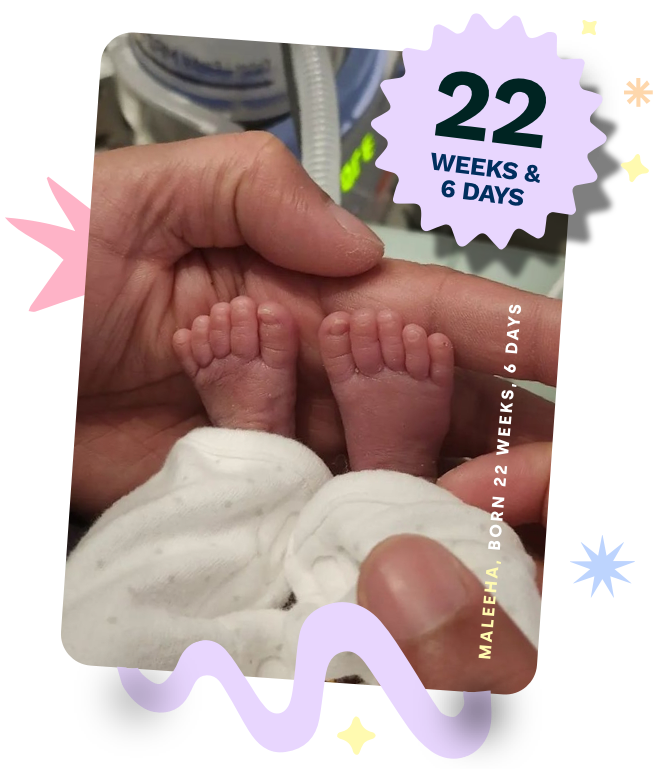
7 reasons
why the law needs to change
Click below to learn more about the campaign and why we need to urgently update our law

1
A contradiction at the heart of our abortion law
2
Over 30 years since the time limit was last updated
3
Large majority of the public support reducing the limit
4
Double the average abortion limit among EU countries
2
Over 30 years since the time limit was last updated
5
Improved survival rates
3
Large majority of the public support reducing the limit
6
Increasing understanding of life before birth

7
Families are backing a change to the law

Reason 1 / 7

Medical advances have left a contradiction at the heart of our abortion law

There is a clear contradiction at the heart of our abortion law and current medical practice.
On the one hand, the law permits ending the lives of babies at 22 and 23 weeks, and, on the other hand, current medical practice strives to save the lives of many babies born prematurely at 22 or 23 weeks gestation.
The annual abortion statistics for England and Wales in 2021 (the most recent year for which a full year of data is available) reveal that 755 abortions were performed under Section 1(1)(a) of the Abortion Act when the baby was at 22 or 23 weeks gestation (the vast majority of abortions are permitted under Section 1(1)(a) of the Abortion Act, for which there is currently a 24-week time limit).


At the same time, according to a recent study, there were a total of 261 babies born alive at 22 and 23 weeks, before the abortion limit, who survived to discharge from hospital in 2020 and 2021.
+ Read more
This means in the same hospital, on the same day, two babies at the same gestational age (22 or 23 weeks gestation) could have very different fates – one could have his or her life deliberately ended by abortion, and the other could be born prematurely and have a dedicated medical team provide the best care they can to try to save his or her life.
This is not mere speculation as a number of hospitals in England provide specialist care for extremely premature babies, usually those born before 27 weeks gestation, and also perform late-term abortions, between 20 and 23 weeks. According to statistics released by the Department of Health and Social Care, between 2018 and 2021 (2018, 2019, 2020, 2021), Birmingham Women’s Hospital performed 143 abortions where the baby was between 20 and 23 weeks gestation in 2021. At the same time, their neonatal intensive care unit “provides intensive care to premature babies born as early as 23 weeks”. This means in this hospital in Birmingham, there could be doctors at one end of the hospital fighting to a keep baby born at 23 weeks gestation alive, and, at the other end of the hospital, there could be other doctors ending the life of a baby at 23 weeks gestation through an abortion.
Similarly, Liverpool Women’s Hospital performed 108 abortions where the baby was between 20 and 23 weeks gestation between 2018 and 2021. The same hospital also provides neonatal intensive care for babies from as young as 22 weeks gestation “and as small as 400g”.

Reason 2 / 7

It’s been over 30 years since the time limit for abortion was last updated to take into account changes in survival rates
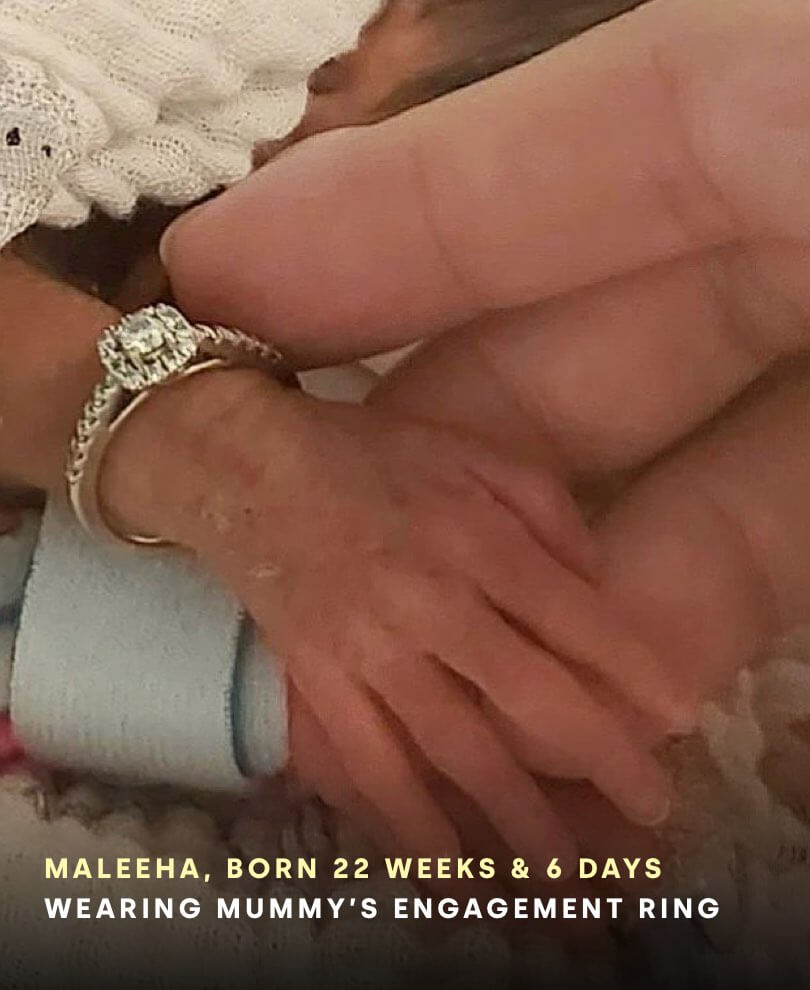
The time limit of 24 weeks for abortions performed under section 1(1)(a) of the Abortion Act 1967, was introduced by section 37 of the Human Fertilisation and Embryology Act 1990.
Prior to this change, the abortion limit had, de facto, been 28 weeks gestation set by the Infant Life (Preservation) Act 1929, which made it illegal to “destroy the life of a child capable of being born alive”.
The introduction of a 24-week gestational limit in 1990 was significantly motivated by the results of a Royal College of Obstetricians and Gynaecologists (RCOG) working party report on neonatal survival rates, which noted improvements in survival rates before 28 weeks of gestation.
+ read more
During the debates ahead of the Human Fertilisation and Embryology Act 1990 becoming law, MPs referred to medical advances that had led to improved neonatal survival rates before 28 weeks gestation and the need for a reduction from 28 weeks.
Similarly, when the question of abortion time limits was revisited in 2008, the lowering of the abortion time limit in 1990 was again linked to the increased survival rates for babies born before 28 weeks gestation.

Reason 3 / 7

A large majority of the public support reducing the abortion time limit

A large majority of the British public support reducing the abortion time limit.
Polling undertaken by Savanta ComRes, who undertake polls for the BBC, ITV, The Independent and Sky News, shows that 60% of the general population and 70% of women support a reduction in the time limit to 20 weeks or below.
The same polling showed 60% of both Conservative and Labour voters supported a reduction in the time limit to 20 weeks or below. 65% of Liberal Democrat voters were in favour of a reduction in the abortion time limit to 20 weeks or below. Significantly, among those with children aged 18 or under in their household, 69% supported reducing the abortion limit to 20 weeks gestation or below.
+ Read more
A separate poll from Ipsos released in August 2023 shows that only 36% of the British population think abortion should be legal during the first 20 weeks of pregnancy. This is a significant decrease in support for abortion up to 20 weeks from the previous year conducted by the same polling organisation where 40% of people in Great Britain thought abortion should be legal in the first 20 weeks.

Reason 4 / 7

Our abortion time limit is double the most common abortion limit among EU countries

In most European Union (EU) countries, abortion is only legal on demand or on broad social grounds up to 12 weeks gestation, making legislation in the United Kingdom double the average among EU countries.
When compared to almost every European Union country, it is clear that the United Kingdom is an outlier.
Among the 27 countries that are member states of the European Union, three have a time limit for abortion on demand or on broad social grounds at 10 weeks, one country at 11 weeks, 15 countries at 12 weeks, 3 countries at 14 weeks and two countries only allow abortion in very limited circumstances.
Countries with 12-week limits for abortion on demand or on broad social grounds include Germany, Italy and Belgium as well as the more “liberal” Nordic countries Denmark and Finland. Even Sweden has a time limit for abortion on demand or on broad social grounds that is much lower than the United Kingdom at 18 weeks.
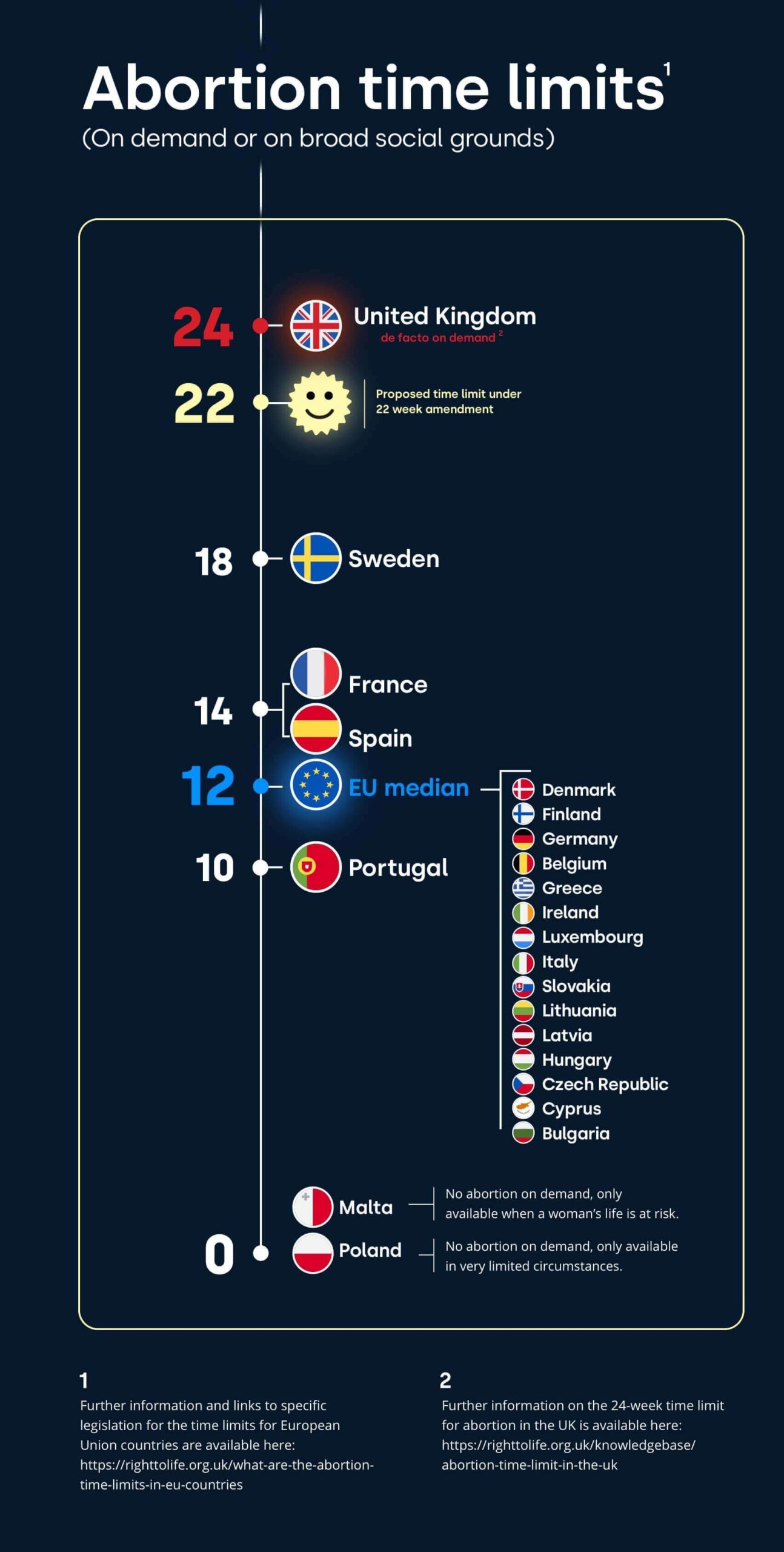
Reason 5 / 7

Survival rates have improved for babies born below the abortion limit

The last time the abortion limit was lowered in 1990, the improved survival rates for extremely prematurely born babies was one of the key considerations that motivated this change.
By the same logic, and informed by the improved survival rates for babies born at 22 and 23 weeks gestation, the abortion time limit should also be lowered now.
Key studies in recent years have documented the improving outcomes for these babies.
+ Read more
A 2008 study looking at survival rates for a neonatal intensive care unit in London found that neonatal survival rates at 22 and 23 weeks gestation had improved over time. In 1981-85, no babies who were born at these gestational ages survived to discharge. However, by 1986-90, 19% did and this increased to 54% in the period 1996-2000.
In the decade to 2019 alone, the survival rate for extremely premature babies born at 23 weeks doubled, prompting new guidance from the British Association of Perinatal Medicine (BAPM) that enables doctors to intervene to save premature babies from 22 weeks gestation. The previous clinical guidance, drafted in 2008, set the standard that babies who were born before 23 weeks gestation should not be resuscitated.
Research published in November 2023 by academics at the University of Leicester and Imperial College London found a total of 261 babies born alive at 22 and 23 weeks, before the abortion limit, who survived to discharge from hospital in 2020 and 2021. This is compared to the Government abortion statistics, which show that in 2021 alone, 755 abortions were performed under Section 1(1)(a) of the Abortion Act when the baby was at 22 or 23 weeks gestation (the vast majority of abortions are permitted under Section 1(1)(a) of the Abortion Act, for which there is currently a 24-week time limit).
Experts in the field have also contributed to the discussion showing the improved survival rates for babies born before the current abortion limit.
Medical doctor, John Wyatt, who is Emeritus Professor of Neonatal Paediatrics, Ethics & Perinatology at University College London and who has worked as a neonatologist for almost 30 years, presented evidence from the UK and across the world “that there has been a steady improvement in the chances of survival of babies born at 22 and 23 weeks gestation since the Abortion Act was last amended [in 1990]”.
While stressing his role as a doctor rather than a legislator, Professor Wyatt suggested the abortion limit should be lowered to 22 weeks. “I would certainly say that, given the advances in science, it would be important that [the abortion time limit] was regularly reviewed in order to see whether the gestational age limit was still appropriate”, he said.
He continued “[T]he current abortion time limit of 24 weeks is not consistent with survival figures for babies born at 22 and 23 weeks gestation, and with current clinical neonatal and paediatric practice”.

Reason 6 / 7
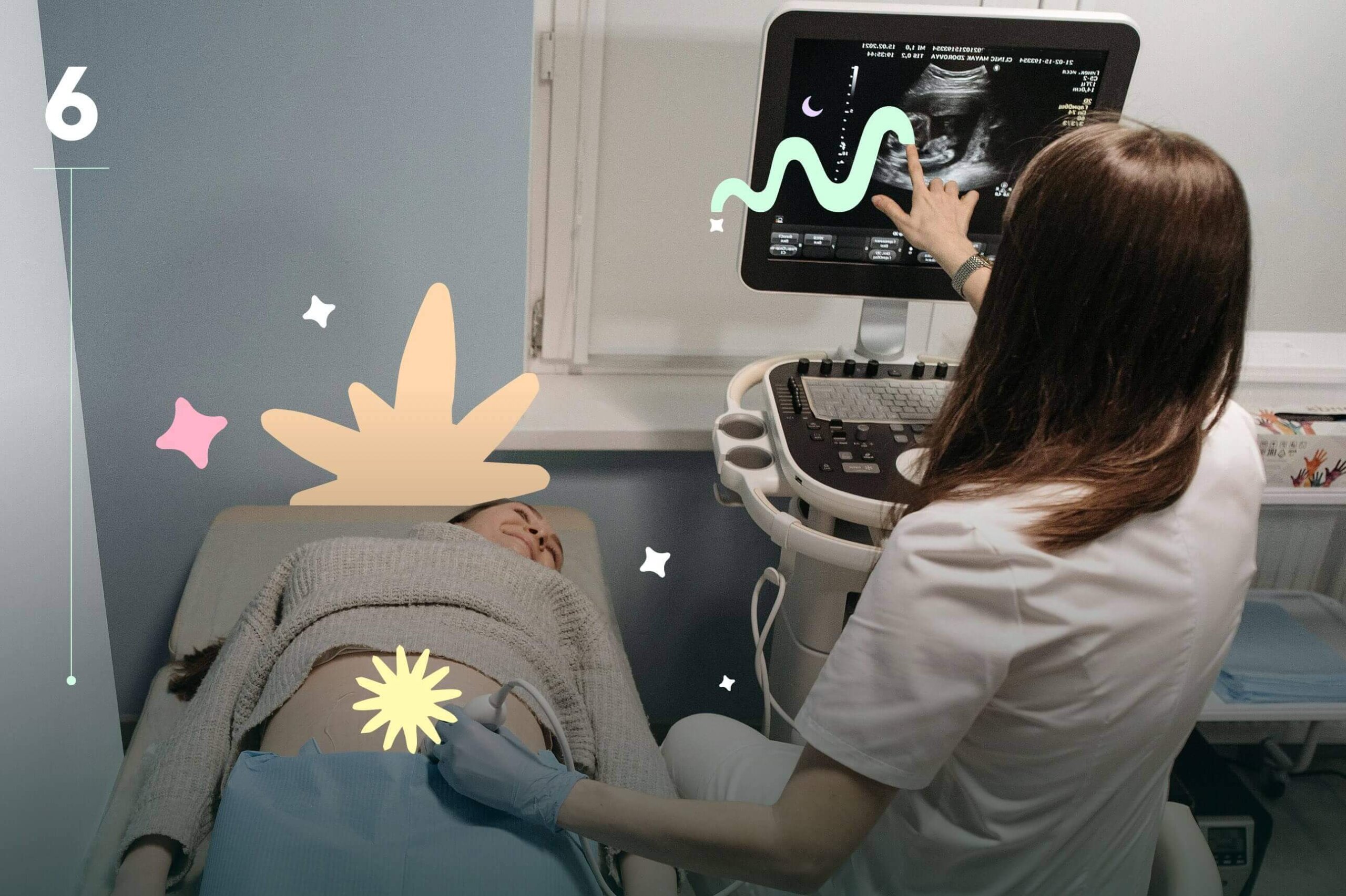
An increasing understanding of life before birth
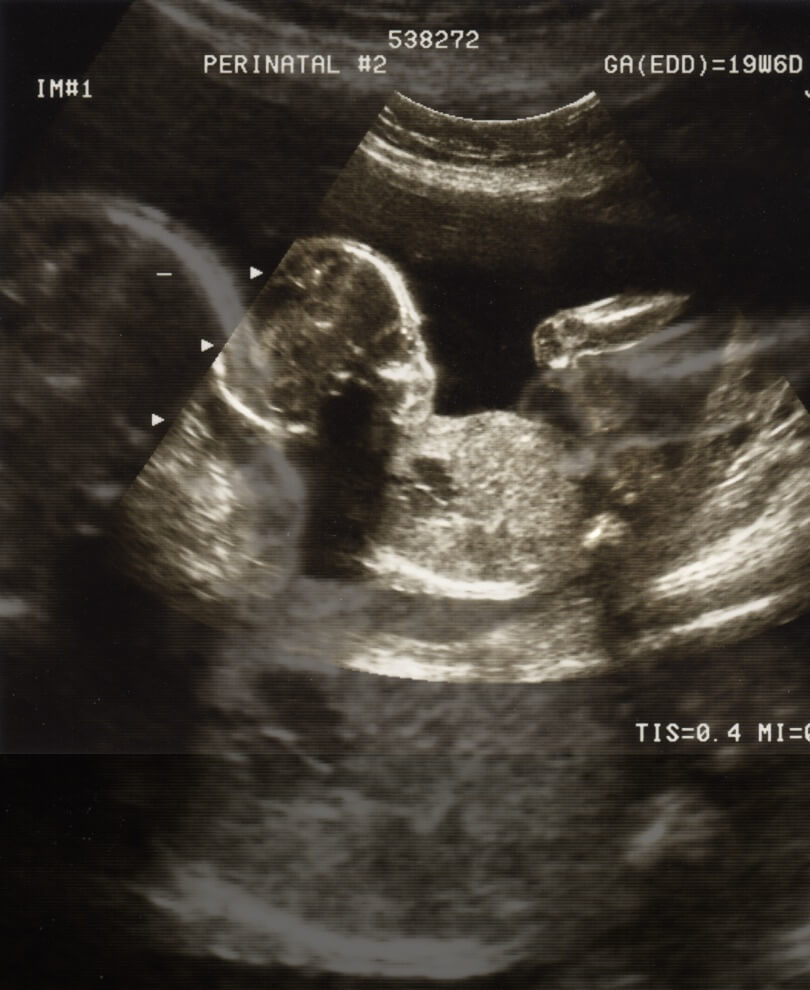
By 24 weeks gestation, the current gestational limit for abortion, the baby has already been fully formed for 12 weeks.
At 12 weeks gestation (the most common abortion time limit among countries in the EU), the NHS outlines that the unborn baby is fully formed. All the organs, muscles, limbs and bones are in place, and the sex organs are well developed. From then on, the baby just has to grow and mature.
At around 15 weeks gestation, the unborn baby will start to hear – they may hear muted sounds from the outside world, as well as the sound of their mother’s voice and heart.
At 16 weeks gestation, the muscles of the unborn baby’s face can now move and the beginnings of facial expressions appear.
+ Read more
At 18 weeks gestation, the unborn baby may respond to loud noises from the outside world, such as music.
At 22 weeks gestation, the unborn baby is beginning to get into a pattern of sleeping and waking.
At 23 weeks gestation, the unborn baby’s lungs are practising breathing movements to prepare for life outside the womb.
It is legal to abort a baby at any of the above stages of development, right through to 24 weeks gestation, under the current conditions set out in section 1(1)(a) of the Abortion Act. If the Gestational Time Limit Reduction amendment is successful, it will provide additional protection at least for babies towards the very end of the above gestational timeline.

Reason 7 / 7
Case studies
Families are calling for an urgent change to the law
Harry & Harley
From Derbyshire, born at
22 weeks + 5 days
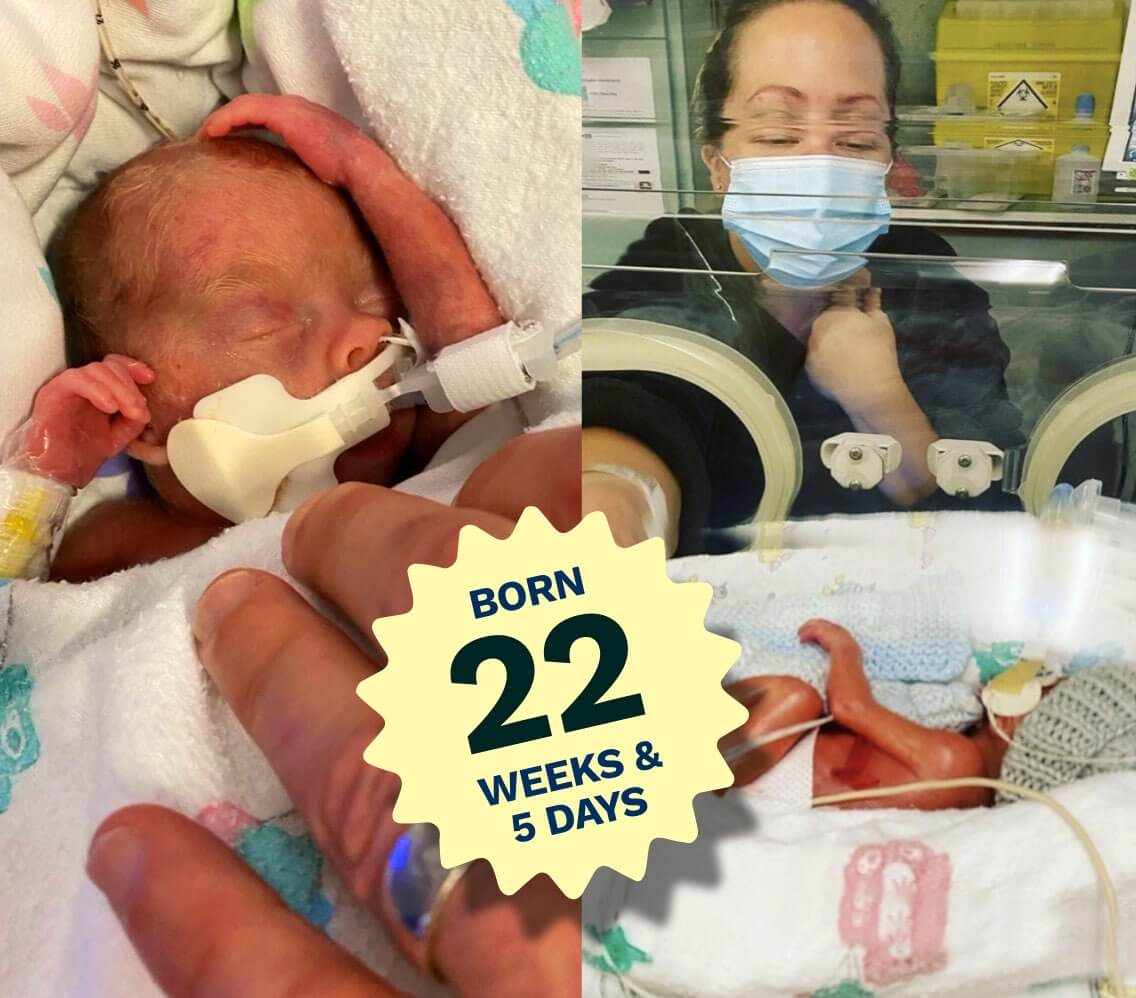

“Our beautiful twins, Harry and Harley, were born at 22 weeks and 5 days. The whole NICU team was amazing, they helped our babies to grow and become well enough to go home. “
– Jade Crane, Harry’s and Harley’s Mother
Jade Crane story
Our beautiful twins, Harry and Harley, were born at 22 weeks and 5 days. The whole NICU team was amazing, they helped our babies to grow and become well enough to go home. They’re now 2.5 years old and bring us so much joy each and every day. They’re both so giggly, inquisitive and it’s so fun to see both of their different personalities develop.
Ever since Harry and Harley were born, we’ve been determined to show that babies born at 22 weeks can survive, because here they are, our little warriors, thriving at home! It’s crazy to think that there are babies being aborted at 24 weeks when our twins were born at 22. It doesn’t make any sense.
+ Read more
Our little ones, born at 22 weeks, are a living proof of what medical advancements can achieve. It’s time the law reflects this reality and the abortion limit is reduced to 22 weeks.
We’re calling on MPs across the UK to vote in favour of the amendment to reduce the abortion time limit from 24 to 22 weeks. Babies in the womb at 22 weeks, which is as young as Harry and Harley were when they were born, deserve to be given a chance at life – they’re tiny humans, but humans nonetheless.

If you are on Instagram and want to follow the twin’s story, visit:
Maleeha
From Cambridge, born at
22 weeks + 6 days
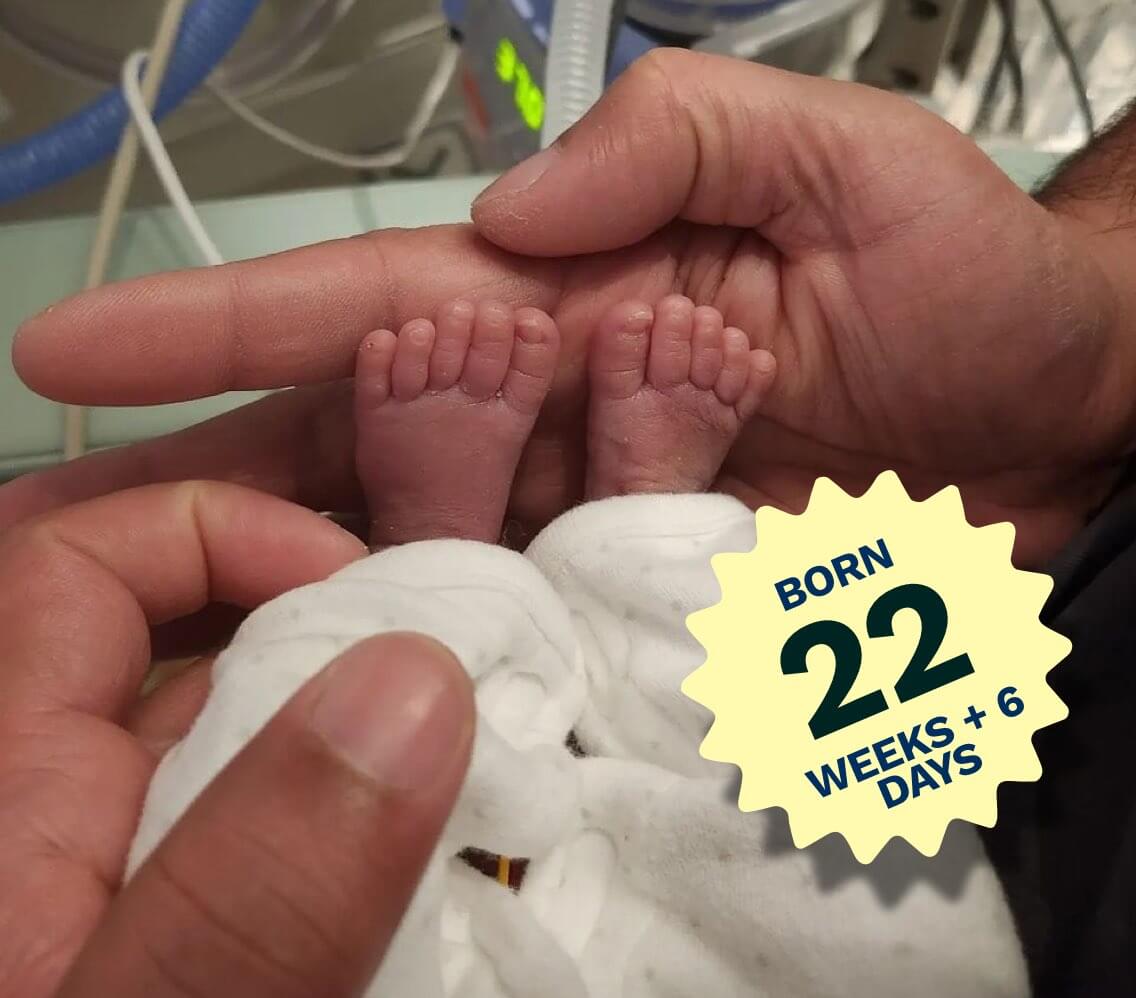

“Our little girl came into the world kicking her legs and crying, telling us ‘here I am’. She was ready to fight and belong and survive and thrive.”
– Hanaa and Tayub, Maleeha’s parents
Hanaa and Tayub
story
Our daughter Maleeha was born at 22 weeks and six days.
She was like a beautiful little red jelly baby. We were warned she may be stillborn or covered in bruises and distressed. But she was perfect! In fact, our little girl came into the world kicking her legs and crying, telling us ‘here I am’. She was ready to fight and belong and survive and thrive.
+ Read more
Maleeha is now 14 months old and defying all medical expectations. She has surpassed all expectations and shows no signs of any lifelong disability. She continues to inspire us every day. Recently, she has had a lot of unexpected ‘firsts’ including giving lots of kisses and cuddles, which is so heartwarming. She has had quite the growth spurt too and learnt to crawl sideways and backwards. My micro preemie is a tiny fighter and I couldn’t be prouder!
We were shocked when we found out that babies who are the same age as our Maleeha was when she was born can be aborted here in the UK. Every day was a challenge as she was just so tiny and there seemed to be so many unknowns, but that didn’t make her any less human and we wouldn’t change it for the world.
At 22 weeks, she was a baby – there is no denying that. We need to urgently update our laws to lower the abortion time limit to 22 weeks. Maleeha was born at 22 weeks and 6 days and all babies born at the same age deserve the same chance at life. Our little girl is a beautiful miracle and continues to inspire us every single day!
Amayarae
From Surrey, born at
23 weeks + 5 days
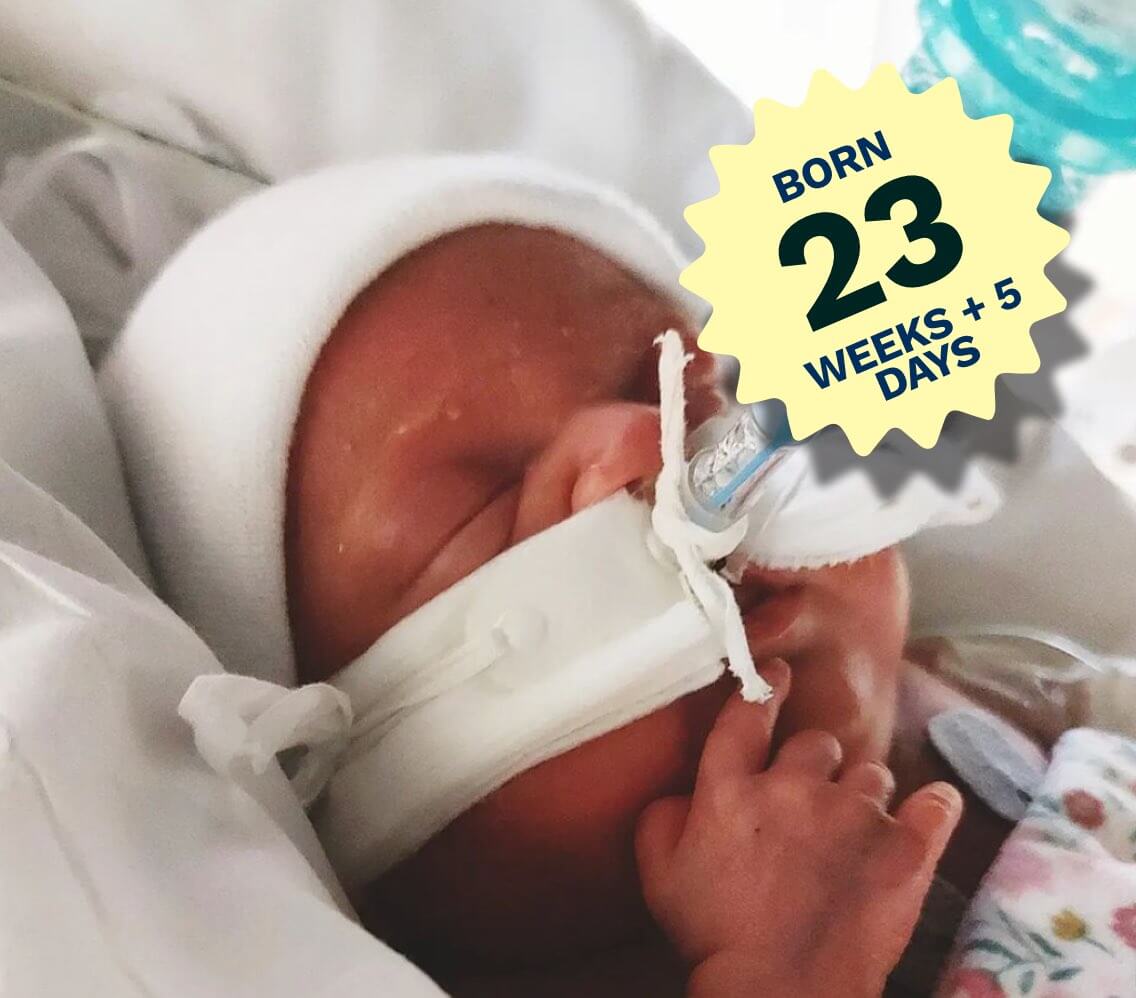
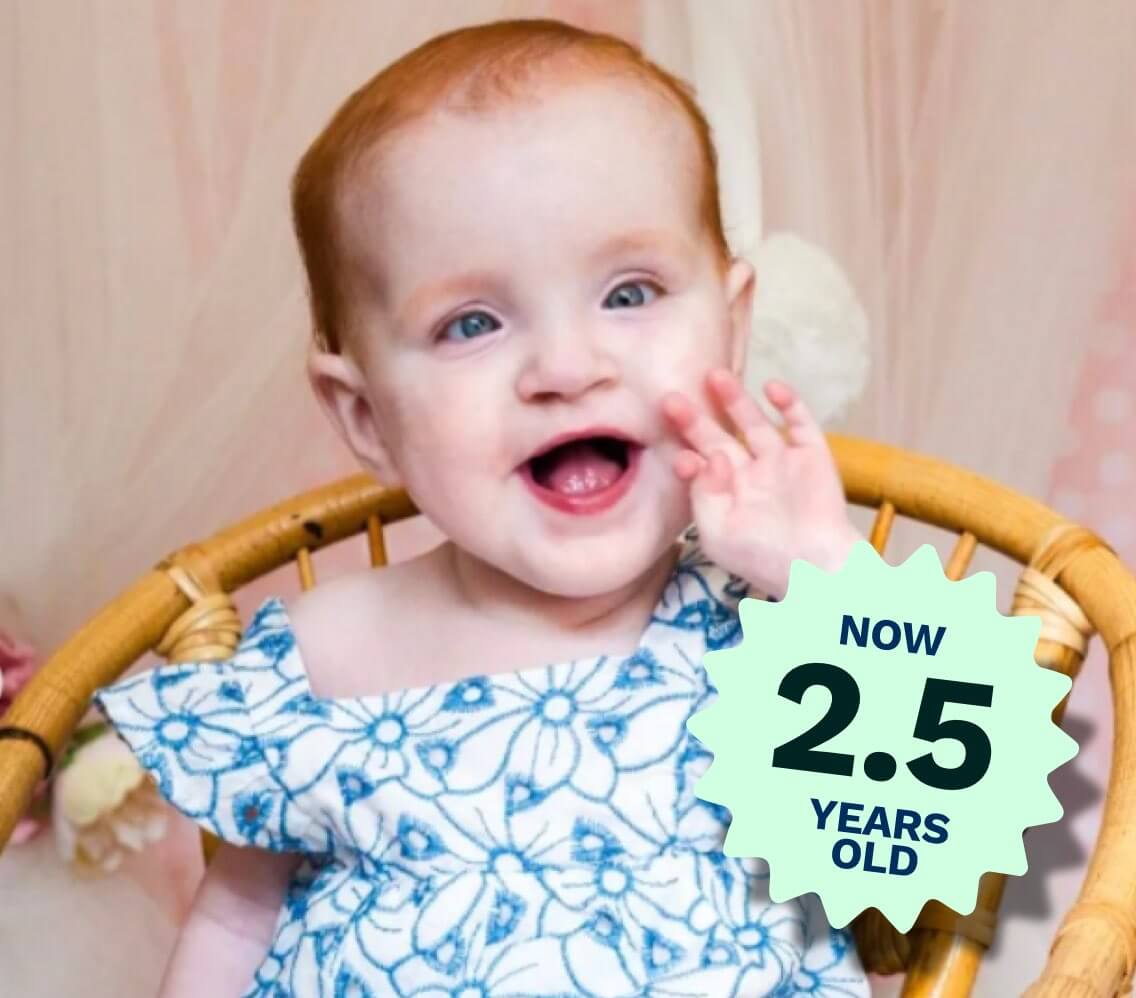
“She has brought so much light to so many lives.”
– Mischa, Amaya’s Mother
Misha story
Our beautiful Amaya was born at 23 weeks and 5 days. She’ll be turning 3 years old in the summer and has come such a long way. She’s the most expressive baby and it is so fun to see what silly face she may pull next, always showing her emotions!
She is such a giggly baby, especially when her favourite show Bluey is on. I’ll never forget bringing her home for the first time and as I opened the ambulance door, the whole family was there cheering and clapping to welcome home my baby. She has brought so much light to so many lives.
+ Read more
It’s not easy to raise our premature baby. Every day was a fight; she has been fighting so hard. But we wouldn’t change it for the world. My little one was born at 23 weeks – why does she get to live while a 24-week baby in the womb could still be aborted?
The UK abortion law is out of date with medical science – my daughter is living proof of that. She’s a baby, just like others in the womb at 22 or 23 weeks. We hope to see this law changed to bring it in line with modern science so babies in the womb, the same age as my little fighter when she was born, are treated the same.

If you are on Instagram and want to follow Amaya’s story, visit:
David
From County Down, born at
23 weeks + 5 days
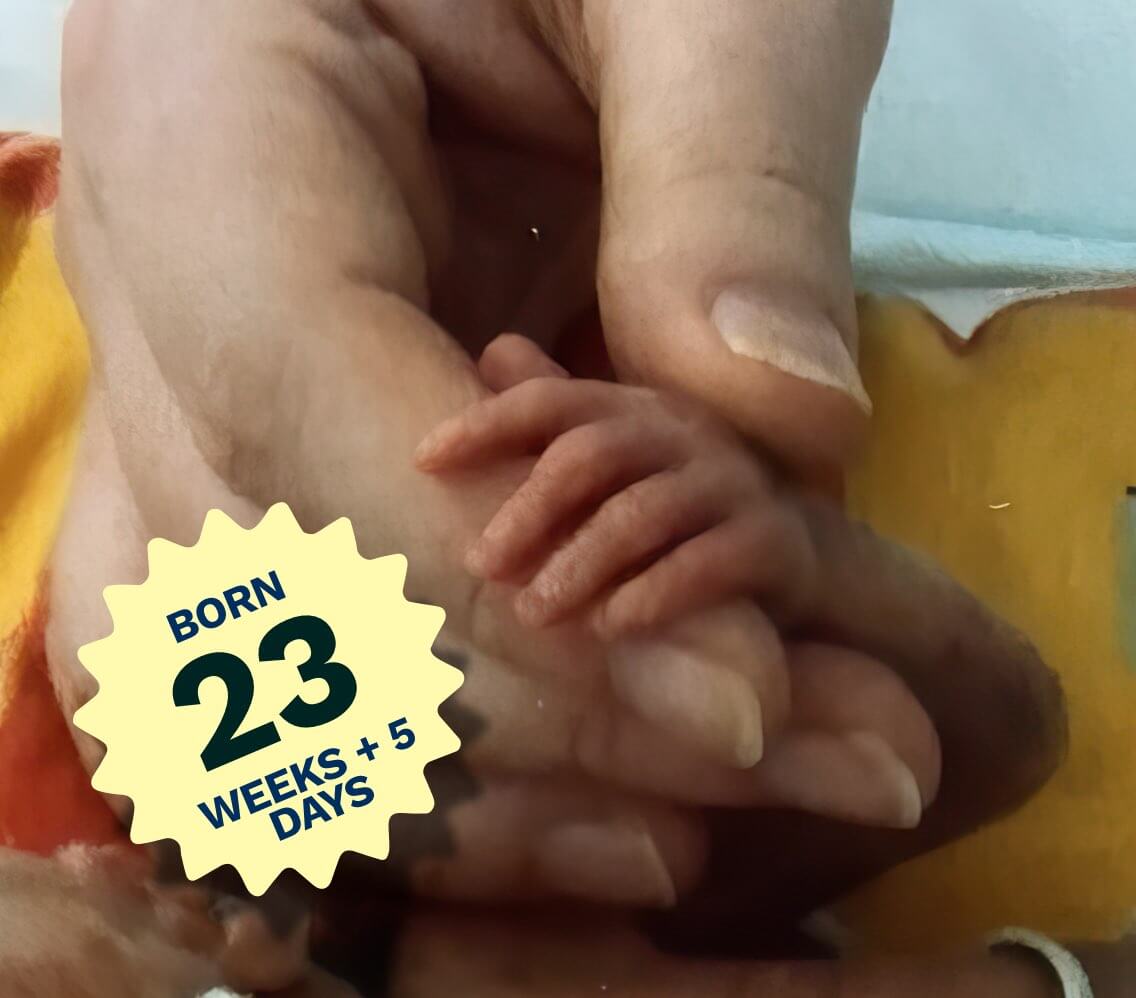
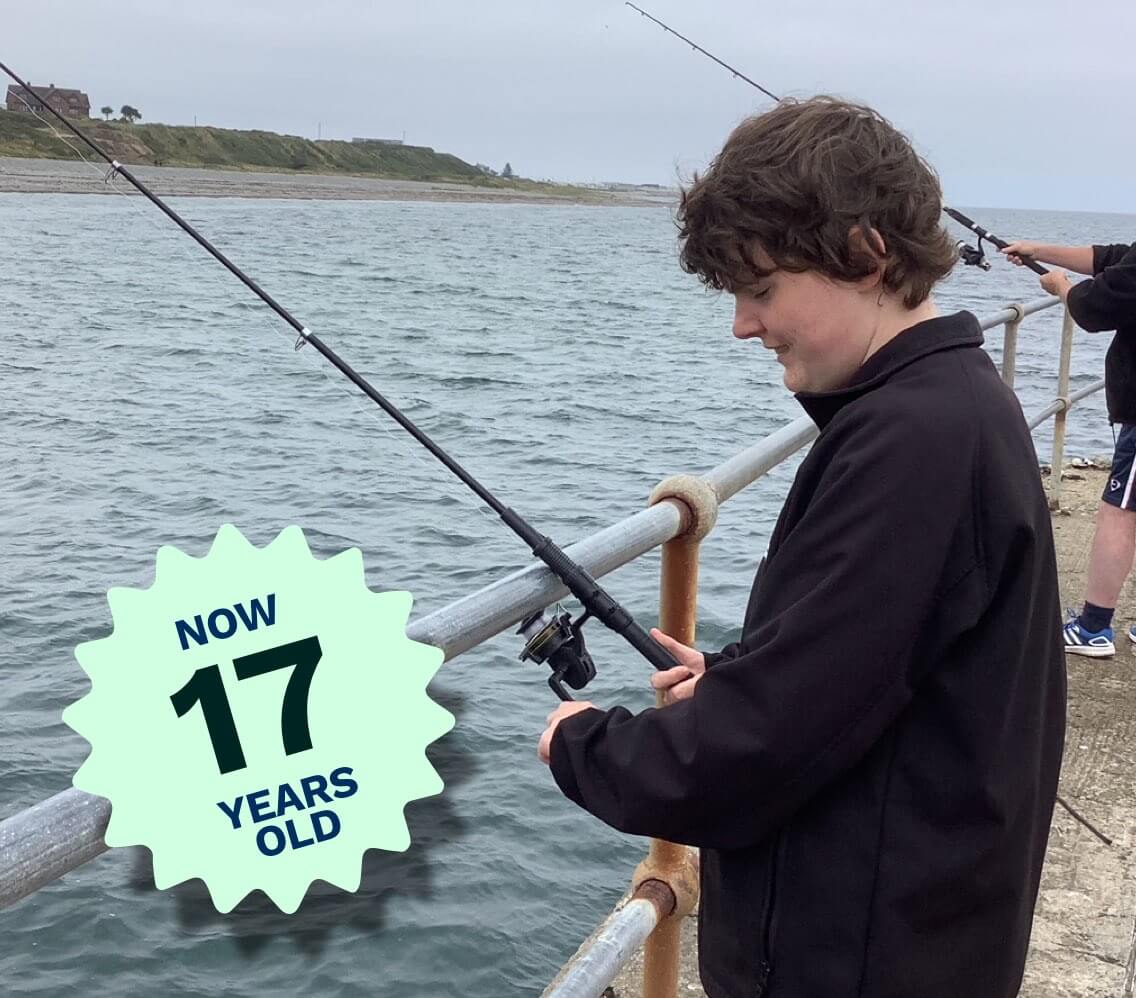
“He is a big happy, healthy teenager who embraces life with both hands”
– Ruth, David’s Mother
Ruth story
Our amazing son David Ross was born at 23 weeks and 5 days and will shortly turn 18 years old! He weighed 665 grams. So tiny but what a fight he put up for life. When he was born he took his first breaths on his own and even made crying sounds – he wanted to live!
Over the years David Ross has exceeded all medical expectations for him and as you can see he is a big happy, healthy teenager who embraces life with both hands. He’s quite the entertainer and he touches every person who knows him in a positive way.
+ Read more
It still amazes me how out of touch our abortion law is. David was born 18 years ago before the 24-week threshold for abortion in Northern Ireland and was clearly a baby. That was nearly two decades ago, babies are now surviving even younger than he was, and still our abortion law hasn’t caught up with the science. Our abortion law must be updated to reflect that babies are human beings, deserving of life both in and outside the womb.
Robyn
From Newport, born at
23 weeks + 2 days
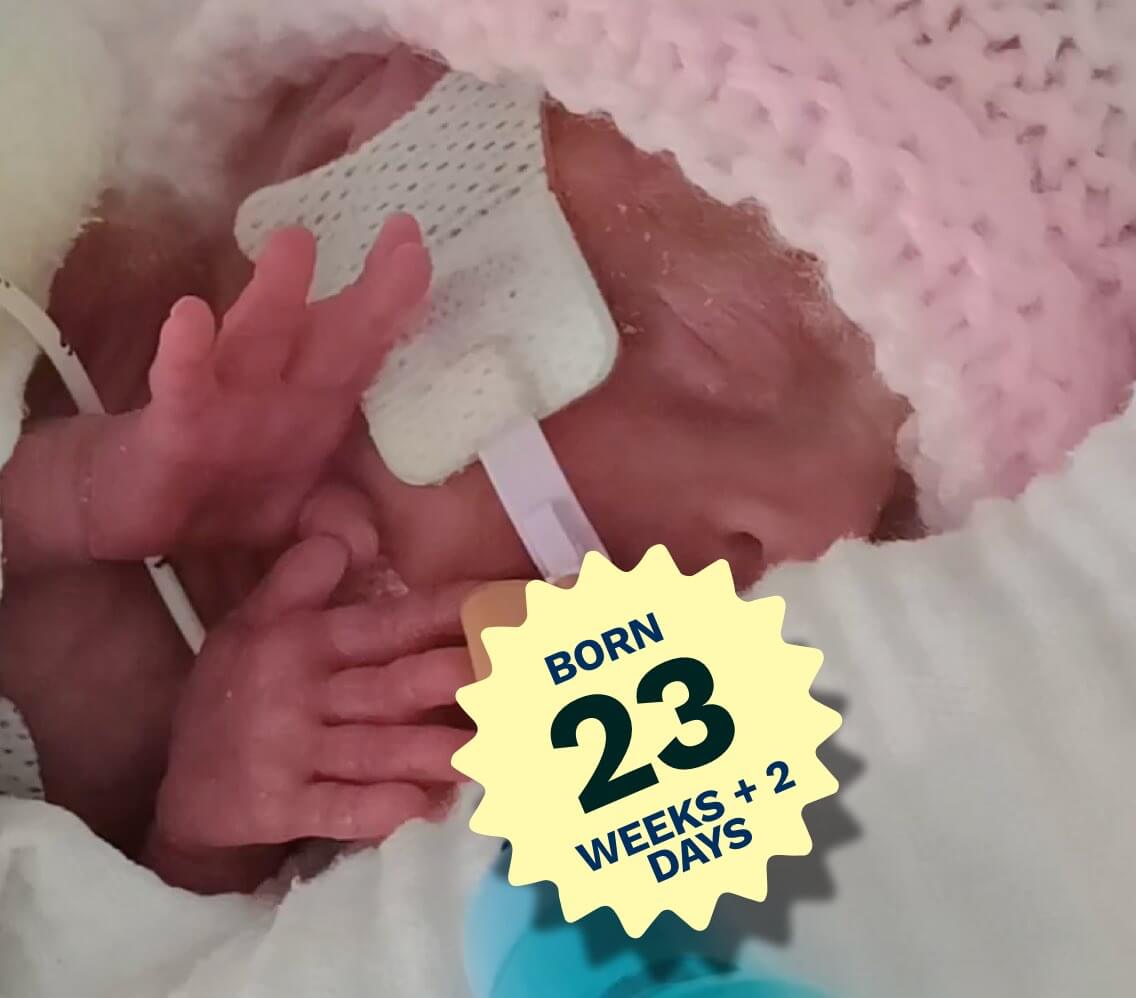

“Her tiny hands were the size of our fingernail and her veins as small as a piece of string. She truly is a tiny warrior.”
– Daniel and Chantelle, Robyn’s parents
Daniel and Chantelle story
Our daughter Robyn was born 23 weeks and 2 days – she turns one next month! Because she was born so young, there are of course challenges but also many joys. It was amazing to see her ‘graduate’ from NICU with all the staff who had played a vital part in her progress, lining the corridor to clap for her. She’s our little fighter!
+ Read more
Weighing just 328 grams, Robyn is the smallest baby born in Wales. Her tiny hands were the size of our fingernail and her veins as small as a piece of string. She truly is a tiny warrior.
Lowering the abortion time limit to 22 weeks is a necessary step in acknowledging the humanity and potential of unborn babies who are capable of surviving outside the womb. Robyn is testament to this! Babies who are the same age as Robyn was when she was born can be aborted for any reason. Seeing Robyn, it is hard to deny that she was a baby when she was born, babies both in and out of the womb at 22 weeks deserve protection.

If you are on Instagram and want to follow Robyn’s story, visit:
Rocco & Franco
From Eastbourne, born at
23 weeks + 6 days
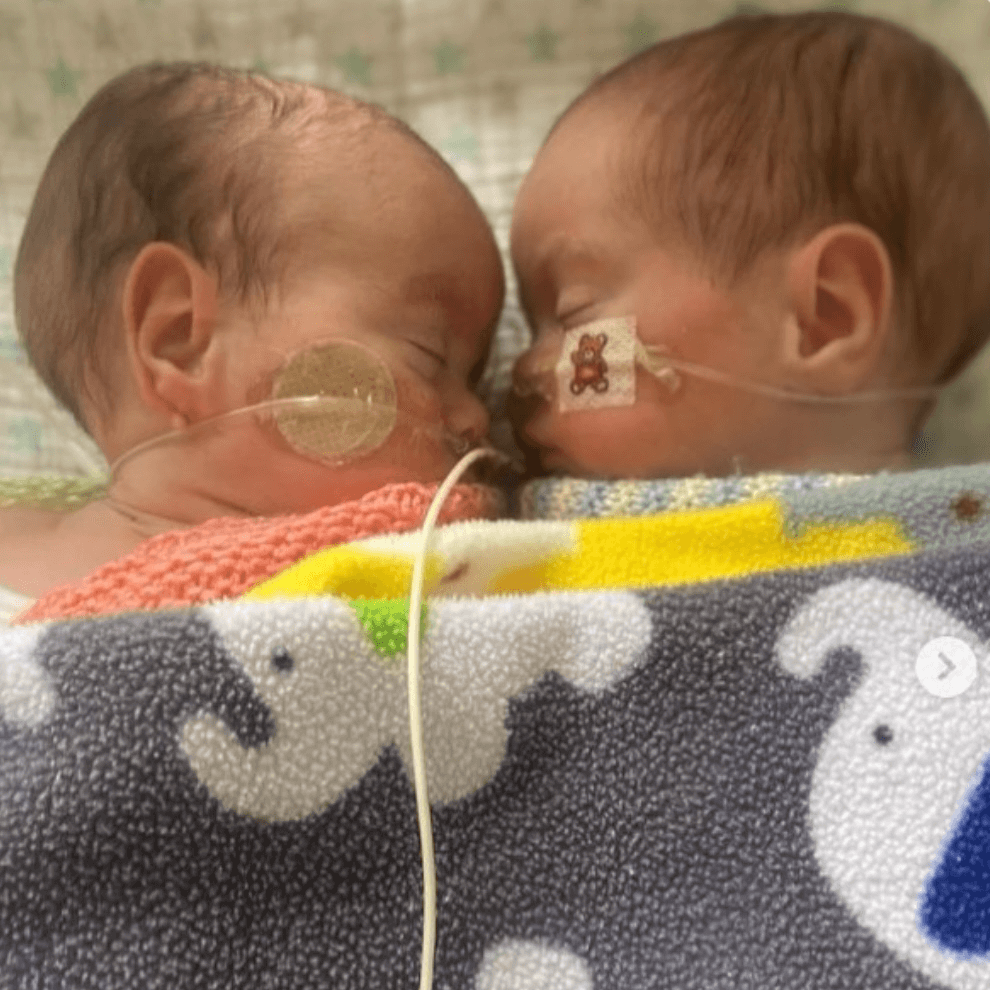

“It’s crazy to think where we were this time 2 years ago, and now they’re here, running around causing perfect chaos.”
– Ruby, Rocco’s & Franco’s mother
Ruby
story
Our beautiful boys Rocco and Franco made a surprise appearance 4 months early at 23 weeks and 6 days. Last month, they turned 2! They amaze everyone they meet and we are so, so proud of how far they have come. It’s crazy to think where we were this time 2 years ago, and now they’re here, running around causing perfect chaos.
+ Read more
Hearing our baby bears cry when they were born, we knew they’d fight to be with us. During all the terrifying moments, we used to dream of these days together, exploring the outdoors and going on adventures, being able to watch them smile and laugh, and here they are, larger than life.
Our little fighters make us so proud – Rocco and Franco were so tiny and so vulnerable when they were born, all we wanted to do was protect them. It’s hard to think that they were young enough to have been aborted but old enough to thrive outside the womb. Our abortion time limit needs to be updated – at 22 weeks these little humans are clearly babies. We must protect them.

Do you know any families who have had a baby born at 22 or 23 weeks who might be happy to share their story? Contact us
Help us get the word out
Get involved
You can help! Share this campaign on social media, ask your local MP to support the amendment or sign the petition.
Frequently asked questions
What is the UK’s current abortion law?
As of 1990, the abortion time limit is 24 weeks gestation (or up to birth in limited circumstances, such as cases where the mother’s life is at risk or the child would be born with a disability).
This 24-week limit applies to abortions performed under section 1(1)(a) of the Abortion Act 1967. There is no time limit for abortions performed under the other sections of the Act (Sections 1(1)(b), 1(1)(c), 1(1)(d) and Section 1(4)).
In 2021, the most recent year for which full abortion statistics are available, there were a total of 214,256 abortions for women resident in England and Wales:
- 98.4% of abortions (210,775) were performed under section 1(1)(a) of the Abortion Act.
- Section 1(1)(a) allows abortion on mental health grounds. This is liberally interpreted by abortion providers to allow de facto abortion on demand. 98% of abortions performed in 2021 were on mental health grounds.
- 1.6% of abortions (3,370) were performed under section 1(1)(d) of the Abortion Act
Scotland – While the Scotland Act 2016 turned abortion into a devolved matter, Scotland has not departed from the 1967 Abortion Act and therefore maintains the same limits as England and Wales.
Northern Ireland – As of March 2020, after the imposition of an extreme abortion law on Northern Ireland by Westminster, de facto abortion on demand is now legal in Northern Ireland for any reason up to 24 weeks. The abortion limit is extended up to birth for babies with disabilities.
What change to the law does the Gestational Time Limit Reduction amendment make?
The Gestational Time Limit Reduction amendment to the Criminal Justice Bill will change the law to lower the abortion time limit from 24 weeks to 22 weeks.
It will do this by amending the Abortion Act 1967 and the Infant Life (Preservation) Act 1929 so that the gestational time limit for abortion that is set out in Section 1(1)(a) of the Abortion Act is lowered from 24 to 22 weeks.
Why was the abortion time limit reduced from 28 weeks to 24 weeks in 1990?
The time limit of 24 weeks for abortions performed under section 1(1)(a) of the Abortion Act 1967, was introduced by section 37 of the Human Fertilisation and Embryology Act 1990.
Prior to this change, the abortion limit had, de facto, been 28 weeks gestation set by the Infant Life (Preservation) Act 1929, which made it illegal to “destroy the life of a child capable of being born alive”.
The introduction of a 24-week gestational limit in 1990 was significantly motivated by the results of a Royal College of Obstetricians and Gynaecologists (RCOG) working party report on neonatal survival rates, which noted improvements in survival rates before 28 weeks of gestation.
During the debates ahead of the Human Fertilisation and Embryology Act 1990 becoming law, MPs referred to medical advances that had led to improved neonatal survival rates before 28 weeks gestation and the need for a reduction from 28 weeks.
Similarly, when the question of abortion time limits was revisited in 2008, the lowering of the abortion time limit in 1990 was again linked to the increased survival rates for babies born before 28 weeks gestation.
Does lowering the time limit have public support?
A large majority of the British public support reducing the abortion time limit.
Polling undertaken by Savanta ComRes, who undertake polls for the BBC, ITV, The Independent and Sky News, shows that 60% of the general population and 70% of women support a reduction in the time limit to 20 weeks or below.
The same polling showed 60% of both Conservative and Labour voters supported a reduction in the time limit to 20 weeks or below. 65% of Liberal Democrat voters were in favour of a reduction in the abortion time limit to 20 weeks or below. Significantly, among those with children aged 18 or under in their household, 69% supported reducing the abortion limit to 20 weeks gestation or below.
A separate poll from Ipsos released in August 2023 shows that only 36% of the British population think abortion should be legal during the first 20 weeks of pregnancy. This is a significant decrease in support for abortion up to 20 weeks from the previous year conducted by the same polling organisation where 40% of people in Great Britain thought abortion should be legal in the first 20 weeks.
How does our 24-week limit compare to other countries?
In most European Union (EU) countries, abortion is only legal on demand or on broad social grounds up to 12 weeks gestation, making legislation in the United Kingdom double the median among EU countries.
When compared to almost every European Union country, it is clear that the United Kingdom is an outlier.
Among the 27 countries that are member states of the European Union, three have a time limit for abortion on demand or on broad social grounds at 10 weeks, one country at 11 weeks, 15 countries at 12 weeks, 3 countries at 14 weeks and two countries only allow abortion in very limited circumstances.
Countries with 12-week limits for abortion on demand or on broad social grounds include Germany, Italy and Belgium as well as the more “liberal” Nordic countries Denmark and Finland. Even Sweden has a time limit for abortion on demand or on broad social grounds that is much lower than the United Kingdom at 18 weeks.
What are some of the key development milestones that happen before 24 weeks gestation?
By 24 weeks gestation, the current gestational limit for abortion, the baby has already been fully formed for 12 weeks.
At 12 weeks gestation (the most common abortion time limit among countries in the EU), the NHS outlines that the unborn baby is fully formed. All the organs, muscles, limbs and bones are in place, and the sex organs are well developed. From then on, the baby just has to grow and mature.
At around 15 weeks gestation, the unborn baby will start to hear – they may hear muted sounds from the outside world, as well as the sound of their mother’s voice and heart.
At 16 weks gestation, the muscles of the unborn baby’s face can now move and the beginnings of facial expressions appear.
At 18 weeks gestation, the unborn baby may respond to loud noises from the outside world, such as music.
At 22 weeks gestation, the unborn baby is beginning to get into a pattern of sleeping and waking.
At 23 weeks gestation, the unborn baby’s lungs are practising breathing movements to prepare for life outside the womb.
It is legal to abort a baby at any of the above stages of development, right through to 24 weeks gestation, under the current conditions set out in section 1(1)(a) of the Abortion Act. If the Gestational Time Limit Reduction amendment is successful, it will provide additional protection at least for babies towards the very end of the above gestational timeline.
Have survival rates for babies born before the abortion time limit improved?
The last time the abortion limit was lowered in 1990, the improved survival rates for extremely prematurely born babies was one of the key considerations that motivated this change.
By the same logic, and informed by the improved survival rates for babies born at 22 and 23 weeks gestation, the abortion time limit should also be lowered now.
Key studies in recent years have documented the improving outcomes for these babies.
A 2008 study looking at survival rates for a neonatal intensive care unit in London found that neonatal survival rates at 22 and 23 weeks gestation had improved over time. In 1981-85, no babies who were born at these gestational ages survived to discharge. However, by 1986-90, 19% did and this increased to 54% in the period 1996-2000.
In the decade to 2019 alone, the survival rate for extremely premature babies born at 23 weeks doubled (from 2 to 4 out of 10 babies born at 23 weeks receiving treatment in UK neonatal units surviving), prompting new guidance from the British Association of Perinatal Medicine (BAPM) that enables doctors to intervene to save premature babies from 22 weeks gestation. The previous clinical guidance, drafted in 2008, set the standard that babies who were born before 23 weeks gestation should not be resuscitated.
Research published in November 2023 by academics at the University of Leicester and Imperial College London found a total of 261 babies born alive at 22 and 23 weeks, before the abortion limit, who survived to discharge from hospital in 2020 and 2021. This is compared to the Government abortion statistics, which show that in 2021 alone, 755 abortions were performed under Section 1(1)(a) of the Abortion Act when the baby was at 22 or 23 weeks gestation (the vast majority of abortions are permitted under Section 1(1)(a) of the Abortion Act, for which there is currently a 24-week time limit).
Experts in the field have also contributed to the discussion showing the improved survival rates for babies born before the current abortion limit.
Medical doctor, John Wyatt, who is Professor of Ethics and Perinatology at University College London and Emeritus Professor of Neonatal Paediatrics, Ethics & Perinatology at University College London and who worked as a neonatologist for almost 30 years, presented evidence from the UK and across the world “that there has been a steady improvement in the chances of survival of babies born at 22 and 23 weeks gestation since the Abortion Act was last amended [in 1990]”.
While stressing his role as a doctor rather than a legislator, Professor Wyatt suggested the abortion limit should be lowered to 22 weeks. “I would certainly say that, given the advances in science, it would be important that [the abortion time limit] was regularly reviewed in order to see whether the gestational age limit was still appropriate”, he said.
He continued “[T]he current abortion time limit of 24 weeks is not consistent with survival figures for babies born at 22 and 23 weeks gestation, and with current clinical neonatal and paediatric practice”.



